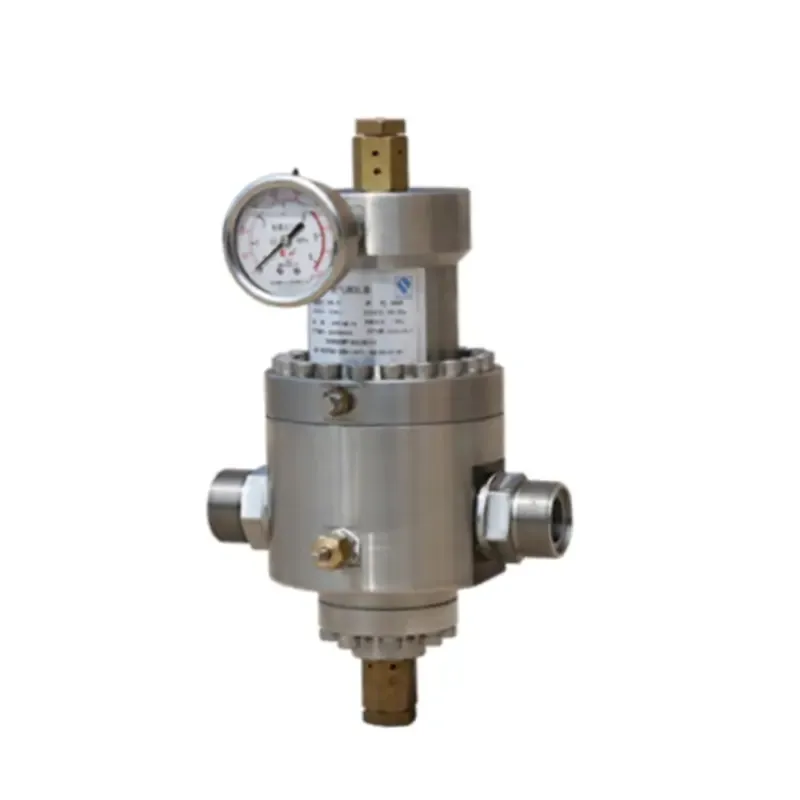
Dec . 10, 2024 11:15
Back to list
Pressure Relief Valve Mechanism and Its Importance in Industrial Safety Systems
Understanding Relief Valves Their Importance and Functionality
Relief valves play a crucial role in various industrial applications, ensuring safety and operational efficiency by regulating pressure within systems. This article explores the fundamentals of relief valves, their types, operating principles, and applications across different sectors.
What is a Relief Valve?
A relief valve is a safety device designed to prevent excessive pressure buildup in a system, which could lead to equipment failure or catastrophic incidents. These valves automatically release pressure when it exceeds a predetermined limit, allowing the system to maintain safe operating conditions. They are widely used in various industries, including oil and gas, chemical processing, power generation, and manufacturing.
Types of Relief Valves
There are several types of relief valves, each designed for specific applications and functions
1. Pressure Relief Valves (PRVs) These are designed to release excess pressure from a system. They can be set to open at a specific pressure and close when the pressure drops back below that level.
2. Safety Relief Valves (SRVs) Similar to PRVs, SRVs provide added safety by automatically venting pressure in the event of sudden surges. They are commonly used in steam and gas applications.
3. Relief Valves with Spring Mechanism Many relief valves use a spring to maintain a preset pressure. When pressure exceeds the set point, the spring compresses, allowing the valve to open and relieve pressure.
.
Operating Principles of Relief Valves
صمام التنفيس

The basic operating principle of a relief valve involves a pressure-sensing mechanism that triggers the valve to open at a specific set point. When the system pressure rises beyond this point, the valve opens, allowing fluid to escape until the pressure drops to a safe level.
Most relief valves operate based on a spring-loaded mechanism. The force exerted by the spring counteracts the pressure in the system. When the pressure exceeds the spring's force, the valve opens, releasing the excess pressure. Once the pressure normalizes, the spring forces the valve to close, preventing backflow into the system.
Applications of Relief Valves
Relief valves are essential in various applications to ensure safety and efficiency
1. Oil and Gas Industry In this sector, relief valves manage pressure in pipelines and storage tanks. They prevent overpressure situations that could lead to leaks, explosions, or environmental disasters.
2. Chemical Processing Relief valves protect reactors and distillation columns from overpressure, which could result in hazardous chemical releases.
3. Power Generation In power plants, relief valves regulate steam pressure in boilers and turbines, ensuring safe operational conditions and preventing equipment damage.
4. Manufacturing Many manufacturing processes rely on relief valves to maintain safe pressure levels in systems involving liquids or gases, protecting both equipment and personnel.
The Importance of Maintenance
Effective maintenance of relief valves is critical to their performance and reliability. Regular inspections, testing, and servicing are necessary to ensure that these devices function correctly. Failing to maintain relief valves can lead to catastrophic failures, including explosions or system shutdowns.
In conclusion, relief valves are vital components in managing pressure across various industries. Their ability to maintain safe operating conditions helps prevent accidents, protect equipment, and ensure smooth processes. Understanding the types, operating principles, and importance of maintenance for relief valves is essential for anyone involved in industries that depend on pressurized systems. Investing in proper equipment and maintenance regimes will significantly enhance safety and operational efficiency in any facility.
Next:
Latest news
-
Safety Valve Spring-Loaded Design Overpressure ProtectionNewsJul.25,2025
-
Precision Voltage Regulator AC5 Accuracy Grade PerformanceNewsJul.25,2025
-
Natural Gas Pressure Regulating Skid Industrial Pipeline ApplicationsNewsJul.25,2025
-
Natural Gas Filter Stainless Steel Mesh Element DesignNewsJul.25,2025
-
Gas Pressure Regulator Valve Direct-Acting Spring-Loaded DesignNewsJul.25,2025
-
Decompression Equipment Multi-Stage Heat Exchange System DesignNewsJul.25,2025

